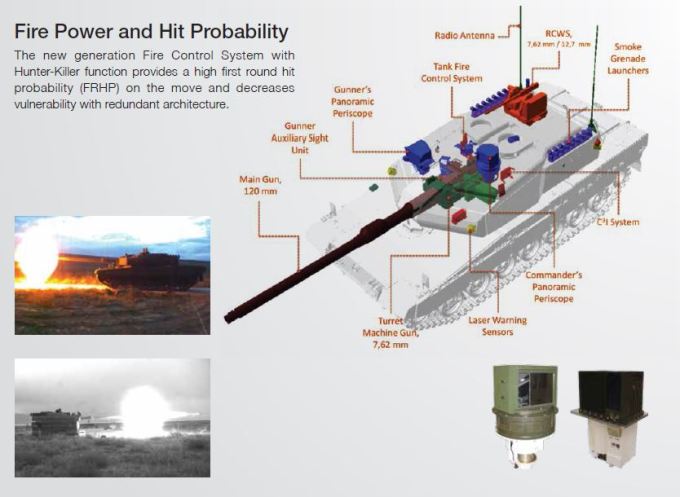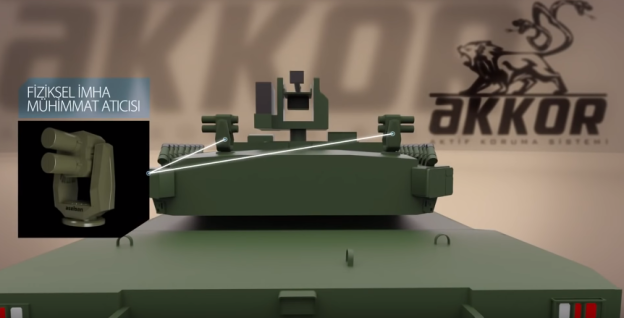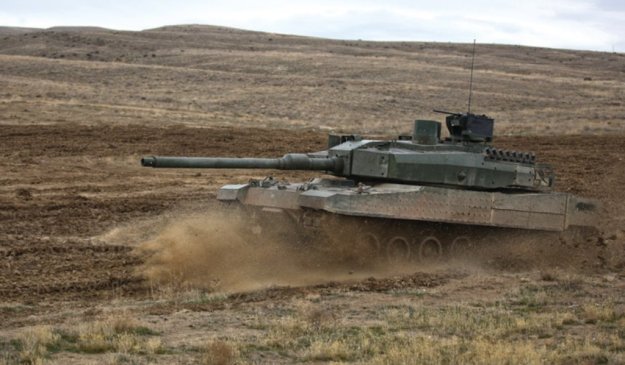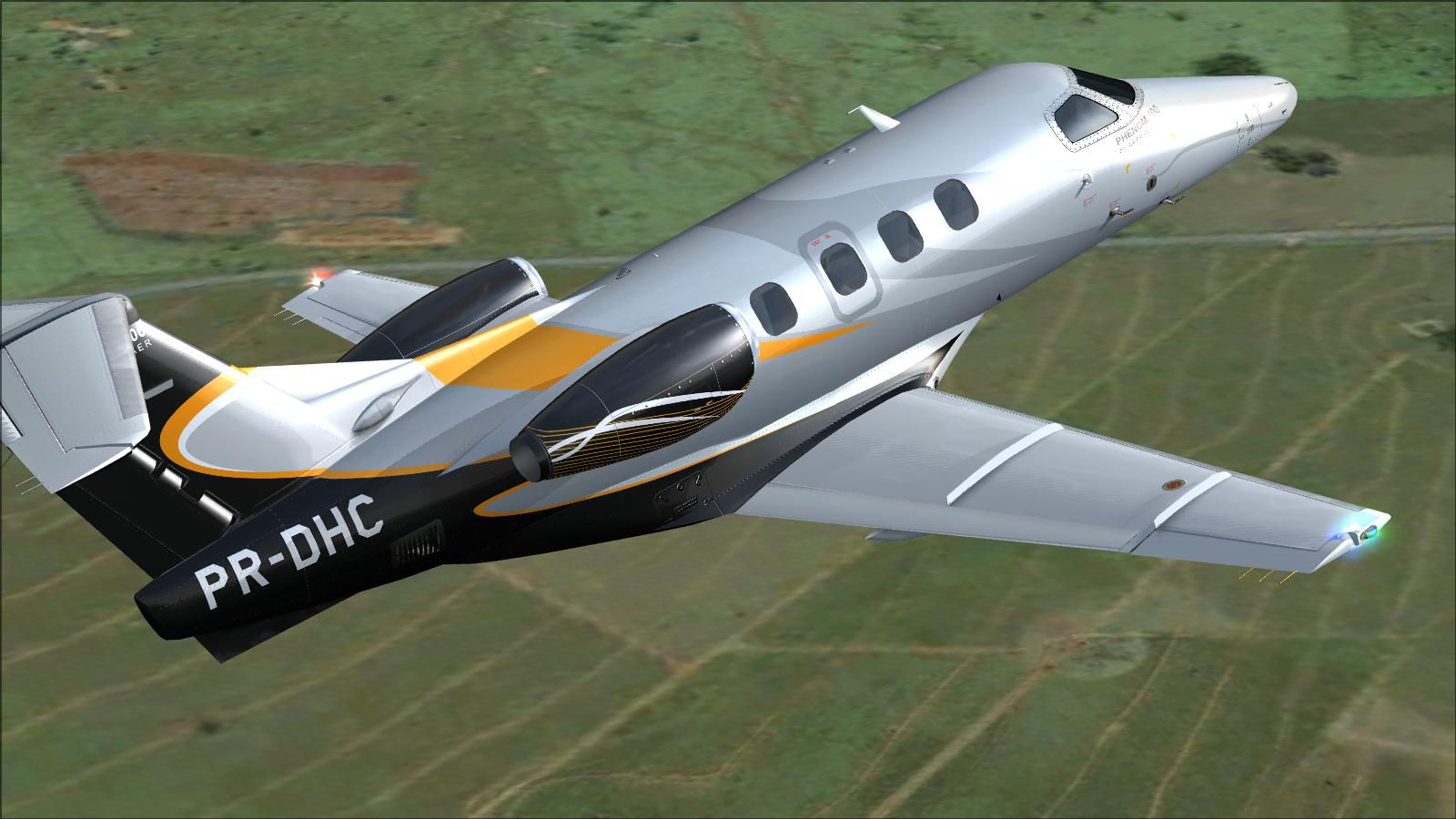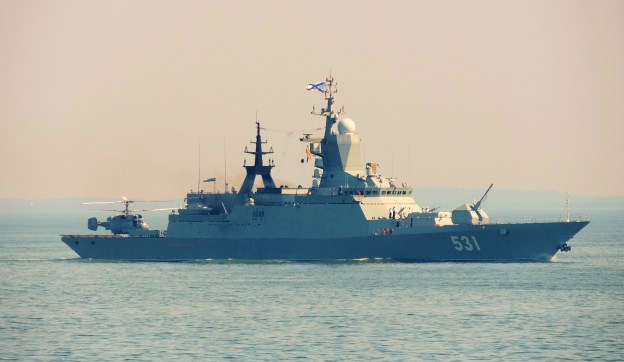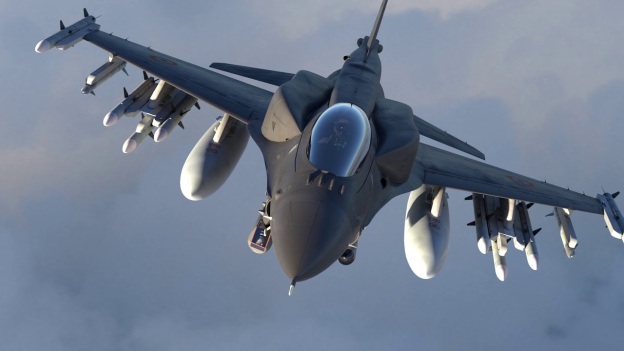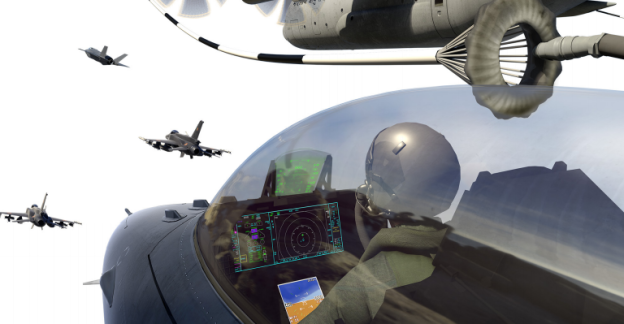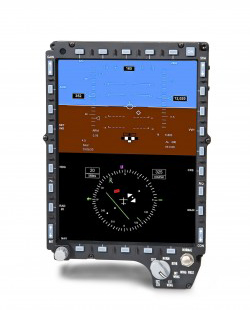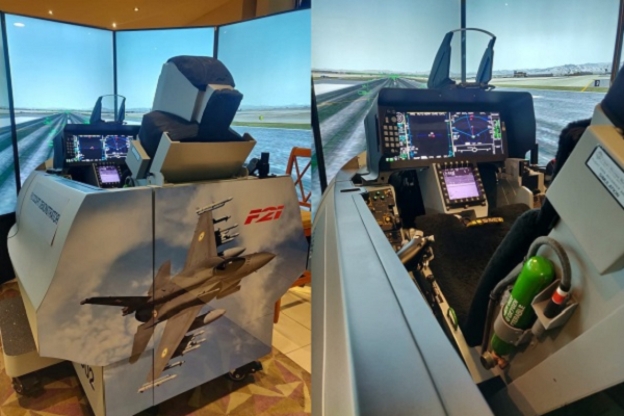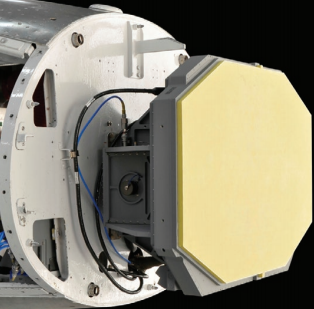The T129 is a twin-engine multi-role attack helicopter designed and manufactured jointly by Turkish Aerospace Industries (TAI) and Italy-based AgustaWestland to meet the requirements of Turkish Armed Forces. It is built based on its predecessor A129 Mangusta platform.
A prototype of the helicopter crashed on 19 March 2010 while executing hover tests. The crash occurred due to loss of power in its tail rotor while flying at an altitude of 1,500ft (457m) near Verbania in northern Italy.
T129 attack helicopter design
The T129 can execute a range of missions, including combat, armed reconnaissance, armed escort, deep strike, fire support, precision strike, security and suppression of enemy air defences. It can operate in both day and night operations in adverse weather conditions.
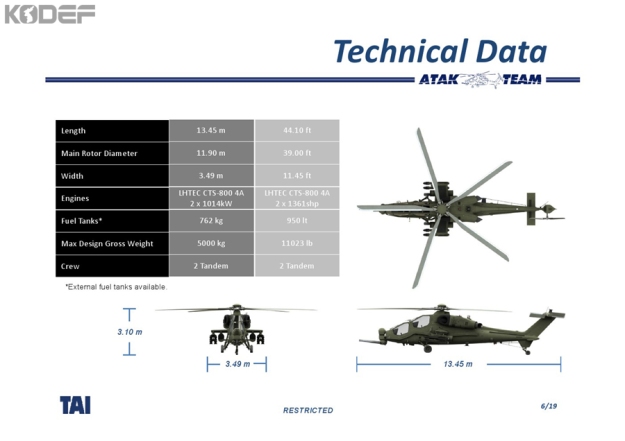
The aircraft is fitted with a five-bladed, 11.9m-diameter main rotor, a two-bladed tail rotor, wheeled landing gear, a laser designator, a laser spot tracker, a colour television camera, a multiple target tracking and emergency locator-transmitter.
Development of the A129 to T129
The Turkish Armed Forces awarded a $3bn contract to TAI in March 2007 to buy 51 (plus 40 optional) A129 Mangusta helicopters from AgustaWestland.
Agusta A129 Mangusta: Details
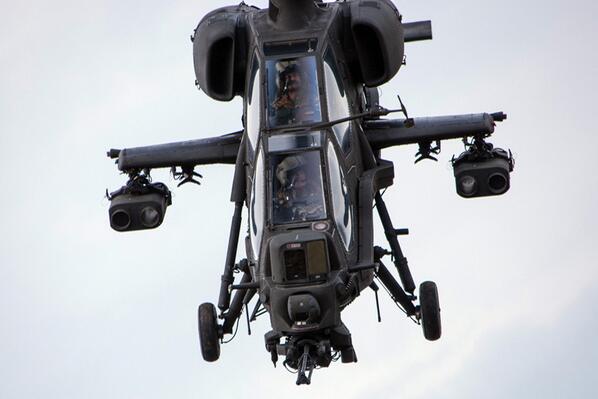
A129 Mangusta
TAI modifies and assembles the A129 in Turkey to produce the T129 helicopter.
TUBITAK (Turkish State Research Organization), METEKSAN Savunma Sanayii and Bilkent University formed a joint venture in July 2007 to build a modern millimetre wave radar for the T129. The final agreement was signed in September 2007.

The development of the T129 began in July 2008 under the ATAK helicopter programme. The maiden flight of the T129 prototype P1 took place on 28 September 2009 at AgustaWestland’s facilities in Vergiate, Italy.
One out of the 51 helicopters built by TAI was retained by the Turkish Ministry of Defence for testing and future development. The remaining helicopters are being delivered to Turkey in two different configurations TUC-1 (30) and TUC-2 (20).
The Turkish Armed Forces received the first T129 ATAK from TAI in May 2014. TAI concluded the delivery of the first fleet of nine T129 ATAK helicopters in July 2015.
TURKEY ACCEPTS MİLDAR MILLIMETRIC WAVE RADAR FOR T129 ATAK: Here
Excerpt
Turkey’s state-owned Anadolu Agency reports that the Turkish Undersecretariat of Defence Industries (SSM) has formally accepted the Meteksan Savunma MİLDAR millimetric wave (mmW) radar for use on the Turkish Aerospace Industries (TAI) T129 ATAK attack helicopter.
The SSM commissioned Meteksan to develop the MİLDAR in 2013. In December 2016, Meteksan and TAI began testing the MİLDAR from onboard the T129 ATAK. Meteksan aimed to see serial production of the MİLDAR commence in 2018 or 2019.
Meteksan Mildar Milimetric Wave Radar

Shooting Control Radar (AKR) is a radar that operates at millimeter wave frequencies, providing shot control capability and navigation assistance for off-road helicopters. It can detect and follow targets in bad weather conditions day or night, and can show obstacles in front of the platform by providing height information. AKR has low power, weight and dimensions as well as low probability of catching.
AKR has two functions:
Shooting Control Function
AKR detects moving targets quickly and is starting to follow. AKR, pilota offers pilots on the radar screen for possible targets that create 360 degrees state awareness. At the same time, the helicopter increases attack and rescue abilities by allowing multiple targets to be engaged.
Terrain Profile Creation Function
It is important to determine the altitude and obstacles in the navigational platform of the helicopter platform in terms of navigation safety. With this function, the radar pilot will scan the direction and angle range desired and present the terrain profile in real time with Pilota. The profile produced is updated periodically to prevent any losses that can occur especially on low flights.
Helicopter Attack Power 4th Floor, Defense Power Increased 7 times with Mildar Fire Control Radar to be Integrated with Weapon Systems. Mildar will be able to provide Land Elevation Information in addition to the Multi-Target Tracking Function in order to support Pilot Navigation in the difficult terrain conditions where the Terrain Profiling Function and the View Distance. Radar Under the Conditions Where Electro-Optic Systems Are Inadequate A large area can detect and track targets by fast and efficient automatic searching and transfer target information to weapon systems, even in difficult weather conditions.
Automatic Landing and Departure System Radar OKIS is being developed as a sensor system to be used in the safe landing and take-off of unmanned aerial vehicles. Designed as a single impact radar, the OKIS will provide precise position information to the automatic takeoff landing system. The system can be used in ANHA as well as other national HRA.
The RESTORE will have SAR (Artificial Spatial Radar) in addition to the target detection and tracking function. The radar system, which will provide detailed analysis of the user’s standing targets with the SAR (Artificial Spatial Radar) mode, will also prevent the aircraft from impacting the terrain obstacle along the flight directions thanks to the land profile extraction feature. The radar system’s mode of land profile creation and detection and tracking modes of air and land vehicles can operate at the same time.

BOTH RAIL will be used in unmanned aerial vehicles with low utility load capacity. The system can also be used as a fire control radar in armed RPEs.
The related prototypes to be developed within the scope of the project are mounted on T129 helicopter and ANKA platforms for testing purposes and the activities related to the trial are carried out by Meteksan Defense and subcontractor TAI. Deliveries are scheduled for April 2017, June 2018 and September 2019, respectively.
Helicopter MİLDAR’s features are as follows:
- Target detection tracking function,
- Multiple target detection,
- Slow and fast scanning,
- High resolution and range resolution,
- 12 km range for target detection and tracking in slow scan mode,
- Low volume, weight and power requirements,
- Real-time ARPO image,
- Creating a land profile of 2,5 km in the mountains,
- Navigation support
Translated by Google – Source: millisavunma.com
T129 countermeasures
The TUC-1 is fitted with native electronic warfare and countermeasures, Aselsan Asel FLIR-300, and foreign missiles. The TUC-2 is additionally fitted with Roketsan UMTAS missiles, and Roketsan Cirit Laser guided 2.75in rockets.
Aselsan Asel FLIR-300T
ASELFLIR-300T is a high performance electro-optical reconnaissance, surveillance and targeting system designed for fixed-wing and rotary-wing airborne platforms, including Unmanned Air Systems (UASs), helicopters and aircrafts. ASELFLIR300T consists of
- High Resolution Infrared Camera
- Laser Range Finder/ Designator (LRF/D)
- Laser Spot Tracker
- Color Day TV Camera
- Spotter TV Camera.
There exists also a laser Pointer configuration which replaces the Color Day TV Camera. The System consists of the following Line replaceable Units (LRUs)
- Turret Unit
- Electronic Unit
- Hand Control Unit(Optional)
- Boresight Unit (Ground Support Equipment)
Applications
- Targeting
- Reconnaissance and Surveillance
Main Features
- Superior Range Performance
- High Resolution IR Camera
- IR camera resolution of 1440×576
- Better image quality and better range
- Zoom Day TV Camera (Optional Selection Instead of Laser Pointer)
- 3-CCD Spotter TV Camera
- Spotter TV camera sensor is 3-CCD, i.e. 3 separate CCDs for Red, Green, Blue color channels for better image quality and better range
- 3 times more sensor pixels used than 1-CCD cameras
- Laser Range Finder and Target Designator
- Laser Pointer (Optional Selection Instead of Zoom Day TV Camera)
- Laser Spot Tracker
- External Boresight Unit (Optional)
- Advanced Image Processing
- Multi Target Tracking
- Simultaneous Target Tracking on IR and TV (Zoom Day TV or Spotter TV) Videos
- Accurate Target Geo-Location
- Determination of Coarse and Speed of Moving Target
- Inertial Measurement Unit (IMU)
- Accurate 4-Axis Stabilization
- Automatic Alignment with Platform
- Internal Heating/Cooling
- Hand Control Unit (Optional)
- Nose-Up and Nose-Down Configurations
Technical Specifications
| IR Camera Resolution | 1440×576 |
| Fields of View (FOVs)
(Horizontal) |
IR: 1.75° – 6.4° – 30° |
| Zoom Day TV: 2° – 40° | |
| Spotter TV: 0.8° | |
| Field of Regard (FOR) | Azimuth: 360° continuous |
| Nose-Up Configuration:
Elevation: -50° to +150° Nose-Down Configuration: Elevation: +20° to -105° |
|
| Laser Range Finder and Target Designator | Range: up to 20 km
Wavelength: 1064 nm Repetition rate: up to 20 Hz |
| Laser Pointer | Wavelength: NIR |
| Laser Spot Tracker | Wavelength: 1064 nm |
| Communication Interface | MIL-STD-1553B, RS-422 |
| Video Interface | 3x Analog PAL/CCIR
1x Digital (Optional) |
| Power Interface | 28 VDC |
| Size | Turret Unit:
Diameter: 534 mm Height: 633 mm |
| Electronics Unit:
315x456x255 mm |
|
| Weight | Turret Unit: 95 kg
Electronics Unit: 23 kg |
Source aselsan.com.tr
Night Vision System
The ATAK helicopter can detect and fire the target at a long distance thanks to the new generation night vision system and advanced thermal vision system. The helicopter features ASELSAN’s original production ASELFLIR-300T day and night thermal sighting and targeting system and Hunter cascade sighting system.
It is possible to carry the visemen just in front of the view of all flight indicators and reference information needed with the cascade integrated vision system produced with completely national possibilities. So the pilot can focus directly on the target without being too busy to show. The hunting system is directed to the point where the nose of the helicopter looks at the pilot. In this way, the pilot is able to shoot before the enemy. The helicopter also has a super system that can calculate the location of the bullet. Translated by google – Source netkale.blogspot.com
The helicopter can survive in the battlefield through the integration of survivability equipment, which includes countermeasure dispensing systems, a missile warning system, a laser warning system, a radio frequency jammer, a radar warning receiver (RWR), infra-red countermeasures, and a suite central processing system (SCPS).
Generic LWR – ESM

| General data: | |
|---|---|
| Type: ESM | Altitude Max: 0 m |
| Range Max: 11.1 km | Altitude Min: 0 m |
| Range Min: 0 km | Generation: Early 2000s |
| Sensors / EW: |
|---|
| Generic LWR – ESM Role: LWR, Laser Warning Receiver Max Range: 11.1 km |
Source cmano-db.com
Cockpit
The T129 features a digital cockpit, which accommodates two crew members.
The cockpit has two colour multifunctional displays (MFD), a keyboard display unit, and a night-vision helmet mounted display system (HMDS).
A flight data recorder (FDR), mission planning ground station (MPGS), weapon control units (WCU), integrated standby instrument systems, and an air vehicle monitoring system (AVMS) are also installed in the aircraft.
Avionics
The T-129 is equipped with an advanced avionics suite, which includes a dual avionics central control computer (ACCC), an automatic flight control system (AFCS), an air data computer (ADC), an inertial navigation system (INS), a global positioning system (GPS) and a digital moving map (DMP).
It is also fitted with a voice encryption system, a data and image transmission system (DITS), and a DAS suite with passive and active countermeasures.
Aselsan was chosen by the Undersecretariat for Defence Industries (SSM) of Turkey in April 2010 to design and build the Helmet Integrated Cueing System (HICS) along with the electronic unit and software for the T129.
The helicopter also has communication systems with national encryption capability, digital video recording system and digital map applications.
ASELSAN AVCI KASK (HELMET)
 ASELSAN AVCI KASK (HELMET) – Image: millisavunma.com
ASELSAN AVCI KASK (HELMET) – Image: millisavunma.com
ASELSAN AVCI System is a system solution developed for attack helicopter pilots. Ease of use, ergonomic design, symbology and video display, head tracking capabilities, the AVCI system significantly reduces pilot workload during the mission.
The AVCI System displays pilots on platform flight information, weapon symbologies, target detection system (FLIR) and night vision images, and close-up viewfinder integrated into the flight helmet.
The AVCI System consists of four main parts: the Electronic Unit, the Head Unit, the Cockpit Modules and the Control Panel for optional head.
The AVCI System basically consists of Head Unit, Electronic Unit and Head Tracking System subunits. It was developed entirely nationally and originally by ASELSAN in accordance with “Open Architecture” structure and Military Environmental Conditions. The high-precision Hybrid Head Tracking System developed under the AVCI Project is the world’s first Hybrid (optic-atalted) head tracking system integrated into a helicopter platform. With the Hybrid Head Tracking System, pilot head movements are detected and the target detection system on the helicopter and all weapon systems are immediately directed to the pilot’s point of view.
The performance, ground, flight and shot tests of the AVCI Kaska Integrated Control System have been successfully carried out on the T-129 ATAK attack helicopter and serial production is still continuing.
 ASELSAN AVCI KASK (HELMET) – Image: millisavunma.com
ASELSAN AVCI KASK (HELMET) – Image: millisavunma.com
The AVCI system fulfills the following functions during the task
- Depending on the selections you made during the Pilota mission, day and night conditions
- Video, symbology, night vision images.
- Depending on the pilot’s head movements, FLIR, guns and other equipment can be commanded to produce head tracking information
- Customized helmet structure for the pilot’s head.
- Protecting the pilot’s head and face from impact and particles.
Functional and Technical Specifications
Electronic Unit
- 6U VME structure in custom ATR dimensions
- Ability to produce symbology
- Overlapping of symbology and video
- Video processing
- 2 analog video inputs, 1 analog video output
- 2 cameralink entries
- 1 spare MIL-STD-1553 interface
- Ethernet and serial (RS-232 / RS-422 / RS-485) interfaces
- ARINC 429 Input / Output interface
- Discrete input / output interfaces
- 28 VDC supply voltage
Head Unit
- Personalized, comfortable flight helmet for the pilot
- Impact and acoustic protection
- Transparent and sun visors
- Night Visibility
- 40o Field of view
- Binocular
- Overlap rate for video and night vision images is 100%
Translated by google – Source millisavunma.com
Armaments

The helicopter is armed with four hard-points which can accommodate 1,200kg (300kg each) of payload. It is fitted with a 20mm three-barrel Gatling-type cannon which can fire 500 rounds.
The aircraft also has 12.7mm gun pods, anti-tank guided missiles (ATGM) and air-to-air missiles (AAM), 70mm rockets and guided rockets.
- Guns: 1× 20 mm (0.787 in) three-barrel gatling-type cannon (500 rounds)
- Hardpoints: 4 and provisions to carry combinations of:
- Rockets: maximum 4 pods with
- 38× 81 mm (3.19 in) unguided rockets or
- 76× 70 mm (2.75 in) unguided rockets or
- 12.7 mm (0.50 in) machine gun pod
- Missiles:
- 8× AGM-114 Hellfire, BGM-71 TOW, Hydra 70, Spike-ER, UMTAS, OMTAS, anti-tank and anti-armor missiles and Sura D/Snora.
- 12x Roketsan Cirit
- 2× AIM-92 Stinger or Mistral or AIM-9 Sidewinder anti-aircraft missiles
- Rockets: maximum 4 pods with
Source wikiwand.com
1 x 20mm three-barrel Gatling-type cannon
 Image: wikiwand.com
Image: wikiwand.com Image: konyaninsesi.com.tr
Image: konyaninsesi.com.tr
81 mm (3.19 in) or 70 mm (2.75 in) unguided rockets pod
UMTAS anti-tank missile
 Image: roketsan.com.tr
Image: roketsan.com.tr
UMTAS, developed by Roketsan primarily for use from attack helicopters is an anti-tank missile system. It is, with the advanced technology it has, highly effective against all armored threats in the field
Properties of the Product
- UMTAS, with its Imaging Infrared Seeker and Laser Seeker options, is an anti-tank missile, having a range of 8 km and lock on before/after launch and “fire and forget/fire and update” properties, used against armored targets, from air to ground as well as ground to ground.
Basic Properties
- Insensitive Munitions (Level V)
- Tandem Warhead Effective Against Reactive Armors
- Integration to Various Platforms (helicopter, UAV, Land Vehicle, Stationary Platform, Light Attack Aircraft, Naval Platform)
- IIR or Laser Seeker Options
- Lock on Before / After – Launch
- Fire and Forget / Fire and Update Properties
- RF Data Link
- Smokeless Composite Solid Propellant
Product Description
UMTAS, which was developed by Roketsan primary for use from attack helicopters, is an antitank missile system. With its advanced technology it is highly effective against all armored threats in the field.
UMTAS, with its maximum range of 8 km and minimum range of 500 m is capable of operating all weather conditions and day/night.
UMTAS, which can be used in Fire and Forget and Fire and Update modes, with the flexibility provided by its target update capability, offers to fire behind the mask position, fire against targets hiding behind mask and adjust hit point and damage assesment capability. UMTAS, defined as the official antitank system of the National Attack Helicopter (T – 129) under development, can be integrated to various platforms (Helicopter, UAV, Land Vehicle, Stationary Platform, Light Assault Aircraft, Naval Platform)
Technical Specifications
| Diameter | 160 mm |
| Max. Rangel | 8 km |
| Min. Range | 0,5 km |
| Weight | 37,5 kg |
| Propellant Type | HTPB-Based Reduced Smoke Composite Propellant |
| Warhead Type | Insensitive Tandem Warhead Effective Against Armor with Reactive Protection |
| Guidance | Imager Infrared (IIR) or Laser |
| Target Types | Heavy Armored / Armored Vehicles |
| Platforms | Helicopters (AH – 1 W, T – 129 ATAK etc.), UAV’s, Land Vehicles, Light Attack Aircraft, Naval Platforms and Stationary Platforms |
Source roketsan.com.tr
2.75” Laser Guided Missile CİRİT
Properties of the Product
CİRİT, is a missile with the longest range in its class which provides a superior precision against light, armored/unarmored and stationary/mobile targets as well as being a cost effective solution.
Basic Specifications
- The 2.75″ Missile with the Longest Range
- Insensitive Munitions (Level V)
- Multi Purpose (Armor Piercing, Anti Personnel and Incendiary) Warhead
- Integration to Various Platforms (Helicopter, UAV, Land Vehicle, Stationary Platform, Light Assault Aircraft, Naval Platform)
- Standard Mode and Smart Mode Pod Integration
- Not a Guidance Kit, New Generation All-Up Round Missile System
- Composite Propellent Technology with Reduced Smoke
In the Inventory of Turkish Armed Forces
Product Description
2.75” Laser Guided Missile CİRİT was designed for the purpose of filling the gap between cheap, unguided rockets with low precision and the high cost, guided anti-tank missiles.
CİRİT can be fired from standard CİRİT POD developed by Roketsan and as well as from Smart Pod. Smart Pod increases the capability envelope of CİRİT missile for inventory information exchange through the platform it possess prior to launch.
CİRİT is stored in the canister which facilities loading and unloading.
CİRİT, by means of its aerodynamic shape and composite solid propellant rocket motor, has the longest range in its class, 8 km, as compared to classic 2.75” unguided rockets.
Moreover, CİRİT missile offers options, such as multipurpose warhead (Armor Piercing Anti-personnel and Incendiary) as well as High Explosive warhead.
CİRİT system defined as the official missile system of National Attack Helicopter (T – 129) under development and can be also integrated to various platforms (Helicopter, UAV, Land Vehicle, Light Assault Aircraft, Naval Platform).
| Diameter | 2.75″ (70 mm) |
| Maximum Range | 8 km |
| Minimum Range | 1,5 km |
| Weight | 15 kg (Without tube complete) |
| Propellant Type | HTPB Based, Smokeless, Composite Solid Propellant |
| Warhead Type | Multi Purpose Warhead, Armor Piercing, Personnel, Incendiary |
| Warhead Type | High Explosive Warhead |
| Guidance | Mid – Phase Guidance with MEMS – AÖB |
| Guidance | Terminal Guidance with Semi-Active Laser Seeker |
| Target Types | Light Armored / Unarmored Vehicles, Stationary and Moving Targets, Bunkers |
| Platforms | Helicopters (AH – 1W, T – 129 ATAK etc.), UAV’s, Land Vehicles, Light Assault Aircraft, Naval Platforms and Stationary Platforms |
Data roketsan.com.tr
Engines
The T129 is powered by two LHTEC T800-4A turboshaft engines. Each engine can produce 1,014kW of output power. The T800-4A is an export version of the CTS800 engine.
A full authority digital engine control system reduces the work load of the pilot by executing autopilot operations.
The engine has a length and diameter of 0.85m and 0.56m respectively and weighs 154kg.
2 x LHTEC T800-4A turboshaft engine
 The CTS800 engine features a modular design combining an advanced technology twin spool compressor, annular combustor, and bladed four stage turbine. Operating the engine in the world’s most austere environments is possible due to the integrated particle separator inlet. Coupled with a highly redundant, dual channel Full Authority Digital Engine Control (FADEC ) system the CTS800 is one of the safest engines in operation today.
The CTS800 engine features a modular design combining an advanced technology twin spool compressor, annular combustor, and bladed four stage turbine. Operating the engine in the world’s most austere environments is possible due to the integrated particle separator inlet. Coupled with a highly redundant, dual channel Full Authority Digital Engine Control (FADEC ) system the CTS800 is one of the safest engines in operation today.
| Specification | CTS800-4 |
| Power shp (kW) | 1,362 (1,015) |
| Pressure ratio | 14:1 |
| Length in (m) | 33.9 (0.86) |
| Diameter in (m) | 22.1 (0.56) |
| Basic weight lb (Kg) | 375 (170) |
| Compressor | 2CFHP |
| Turbine | 2HP, 2PT |
| Applications | Shinmaywa US-2 BLC, AgustaWestland Super Lynx, AgustaWestland Lynx MK9A, AgustaWestland AW159 Lynx Wilcat, AgustaWestland ATAK Team T129, Sikorsky X-2 demonstrator |
Specification rolls-royce.com
Operators: Here
Performance
The T129 can climb at a rate of 14m/s. Its maximum cruise speed is 269km/h. The normal and ferry range of the helicopter are 561km and 1,000km, respectively.
The service ceiling of the helicopter is 6,096m. Its maximum endurance is three hours.
Main material source army-technology.com
Technical Data
| WEIGHTS | ||||
|---|---|---|---|---|
| Take-off mass |
5000 |
kg |
11023 |
lb |
| Wing weapons stores |
4 x 300 |
kg |
4 x 661 |
lb |
| CREW | |
|---|---|
| Pilots |
2 |
| EXTERNAL DIMENSIONS | ||||
|---|---|---|---|---|
| Fuselage length |
12.50 |
m |
41.0 |
ft/ in |
| Overall height |
3.40 |
m |
11.2 |
ft/ in |
| Rotor diameter |
11.90 |
m |
39.0 |
ft/in |
| PERFORMANCE: ENGINES – 2 X LHTEC CTS800-4A WITH FADEC | ||||
|---|---|---|---|---|
| Maximum cruise speed |
269 |
kph |
145 |
kts |
| Power take off |
1014 |
kW |
1361 |
shp |
| Hover IGE (ISA) |
3993 |
m |
13100 |
ft |
| Hover OGE (ISA) |
3048 |
m |
10000 |
ft |
| Maximum range |
561 |
km |
303 |
nm |
| Ferry range |
1000 |
km |
540 |
nm |
| Maximum endurance |
3 h |
|||
Technical data leonardocompany.com
Images are from public domain unless otherwise stated
Main image by Türk Silahlı Kuvvetleri
Revised May 15, 2017
Updated Sep 02, 2021

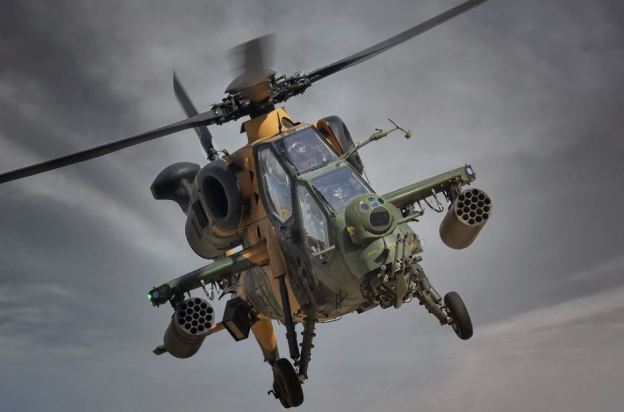
















 cmn-group.com
cmn-group.com

 cmn-group.com
cmn-group.com
 Oto Melara 76mm SR main gun, one Bofors 40 Mk4 40mm gun, 2×30 or 20mm remote weapon systems and 8 MM40 blkIII Exocet anti-ship missiles
Oto Melara 76mm SR main gun, one Bofors 40 Mk4 40mm gun, 2×30 or 20mm remote weapon systems and 8 MM40 blkIII Exocet anti-ship missiles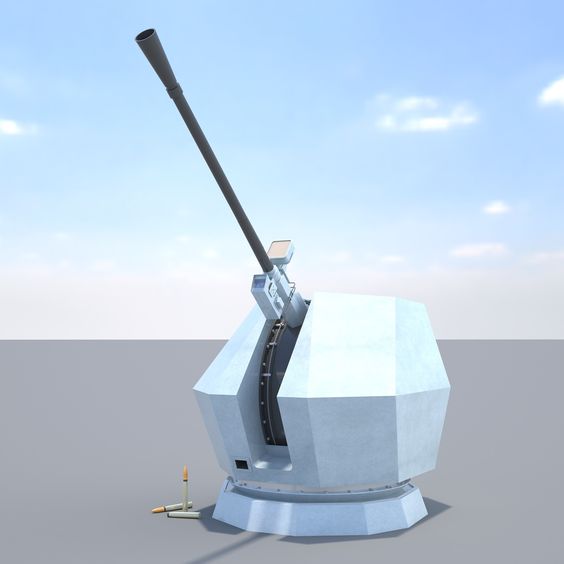
 Nexter Systems NARWHAL 30mm remote-controlled naval gun mount
Nexter Systems NARWHAL 30mm remote-controlled naval gun mount SIMBAD RC MISTRAL missile (Example)
SIMBAD RC MISTRAL missile (Example) Eight anti-ship missiles Exocet MM40 Block3
Eight anti-ship missiles Exocet MM40 Block3  C-MAST integrated mast – navigation, radars, and electronic warfare sensors are all grouped in a single integrated mast.
C-MAST integrated mast – navigation, radars, and electronic warfare sensors are all grouped in a single integrated mast.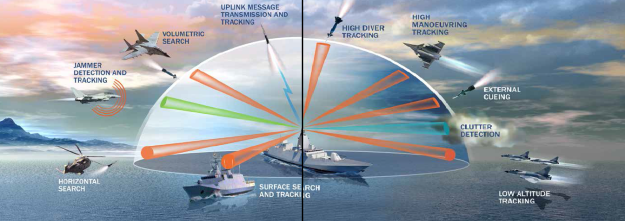

 @almasdarnews.com
@almasdarnews.com @Военный Советник https://pbs.twimg.com/media/Caib_MkW4AIayuO.jpg:large
@Военный Советник https://pbs.twimg.com/media/Caib_MkW4AIayuO.jpg:large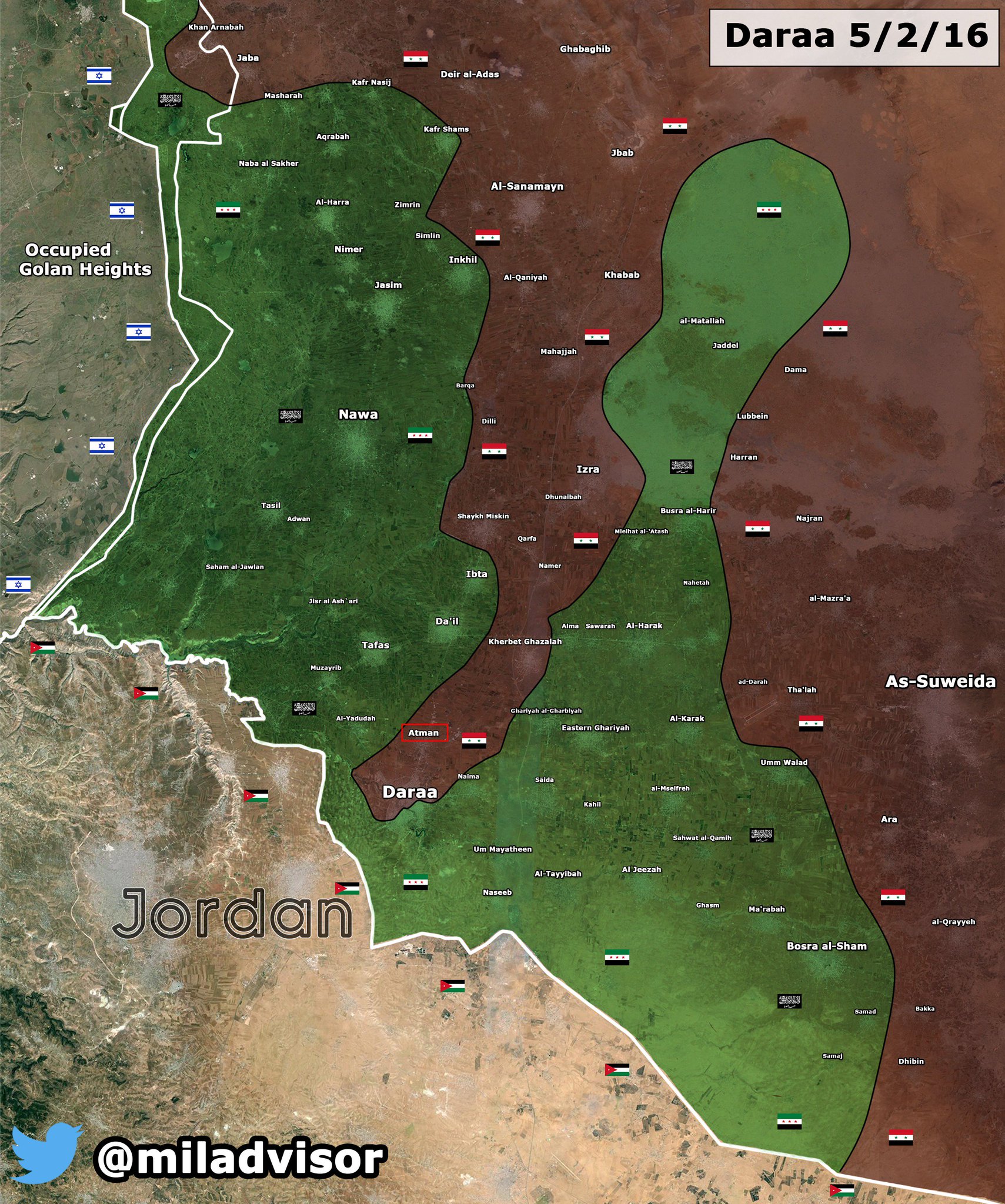 @Военный Советник https://pbs.twimg.com/media/Caer7XPXIAAPL5k.jpg:large
@Военный Советник https://pbs.twimg.com/media/Caer7XPXIAAPL5k.jpg:large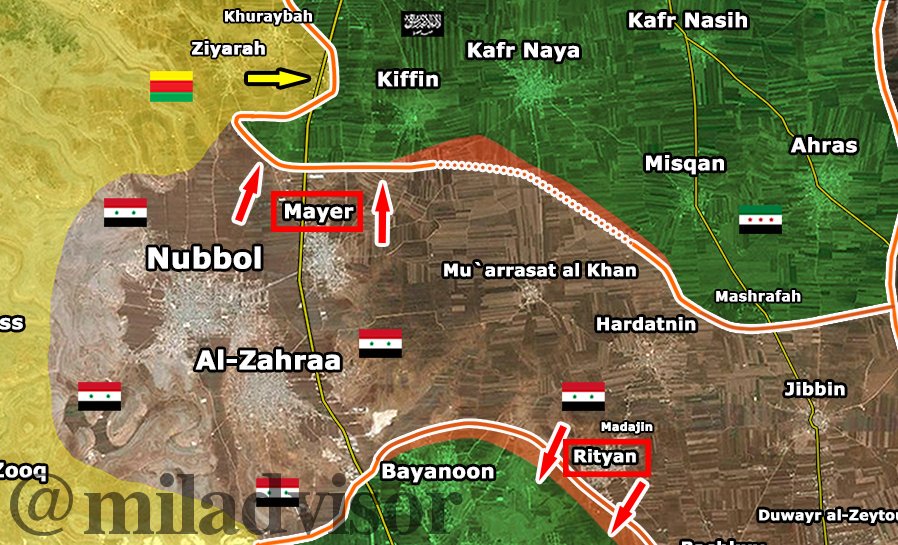 @Военный Советник
@Военный Советник @Военный Советник
@Военный Советник
 Finland has decided to purchase new missiles for its Lockheed Martin M270 Multiple Launch Rocket Systems (MLRS). Source: Finnish Defence Forces
Finland has decided to purchase new missiles for its Lockheed Martin M270 Multiple Launch Rocket Systems (MLRS). Source: Finnish Defence Forces
 M31A1 missile
M31A1 missile M31A1 Unitary Missiles and M30A1 Alternative Warhead Missiles
M31A1 Unitary Missiles and M30A1 Alternative Warhead Missiles






 Eour anti-ship missiles Exocet MM40 Block3
Eour anti-ship missiles Exocet MM40 Block3 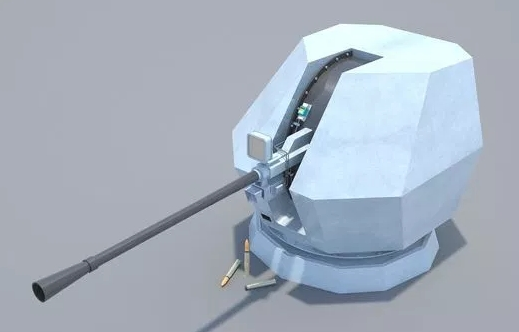

 Nexter Systems NARWHAL 30mm remote-controlled naval gun mount
Nexter Systems NARWHAL 30mm remote-controlled naval gun mount

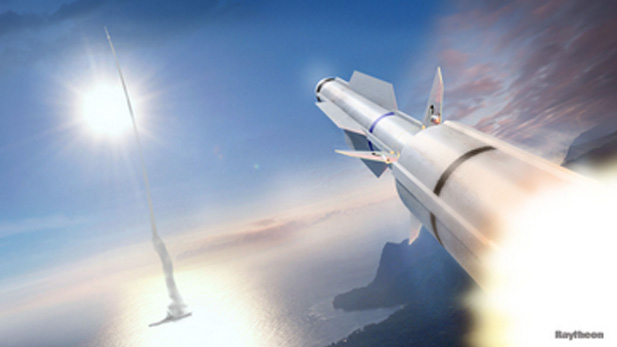


 cyberevoblog.blogspot.com
cyberevoblog.blogspot.com



 South Korean K2 Black Panther
South Korean K2 Black Panther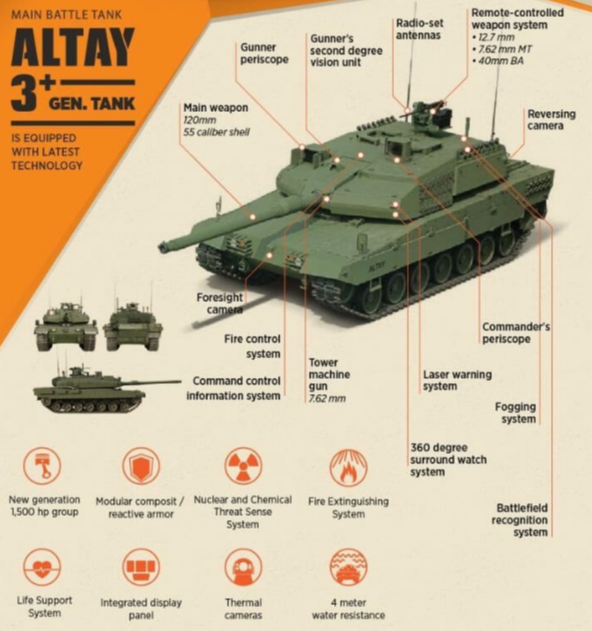
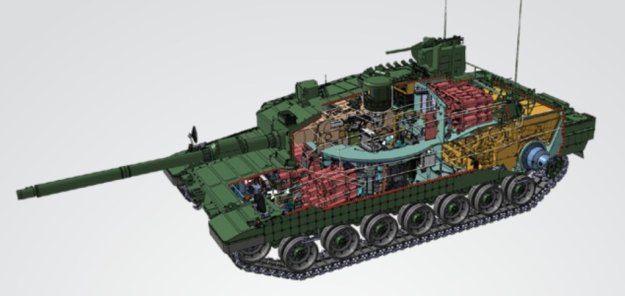

 120-mm / L55 smoothbore gun
120-mm / L55 smoothbore gun
 120 mm/L55 Fume extractor
120 mm/L55 Fume extractor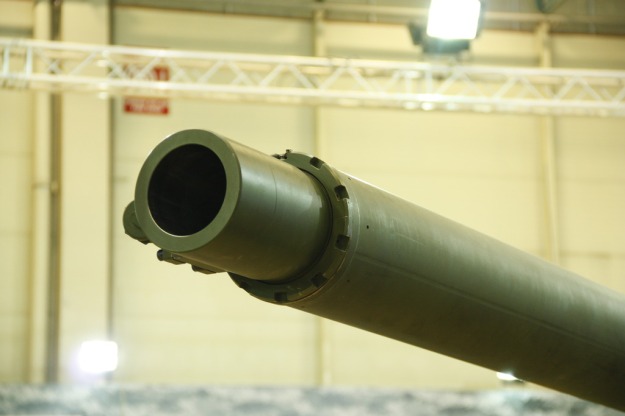 120-mm / L55 smoothbore gun
120-mm / L55 smoothbore gun


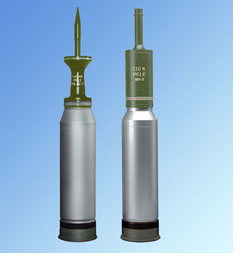


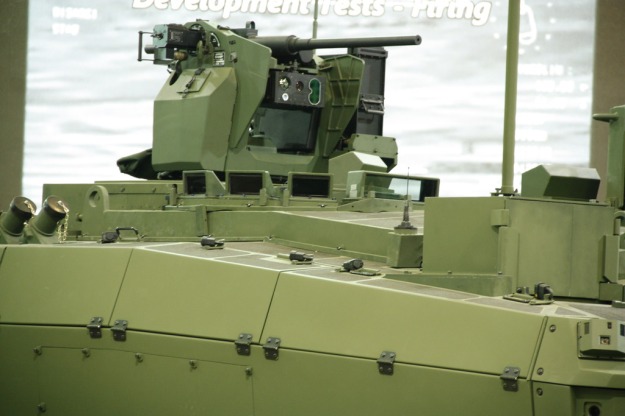 Roof-mounted 12.7-mm machine gun
Roof-mounted 12.7-mm machine gun